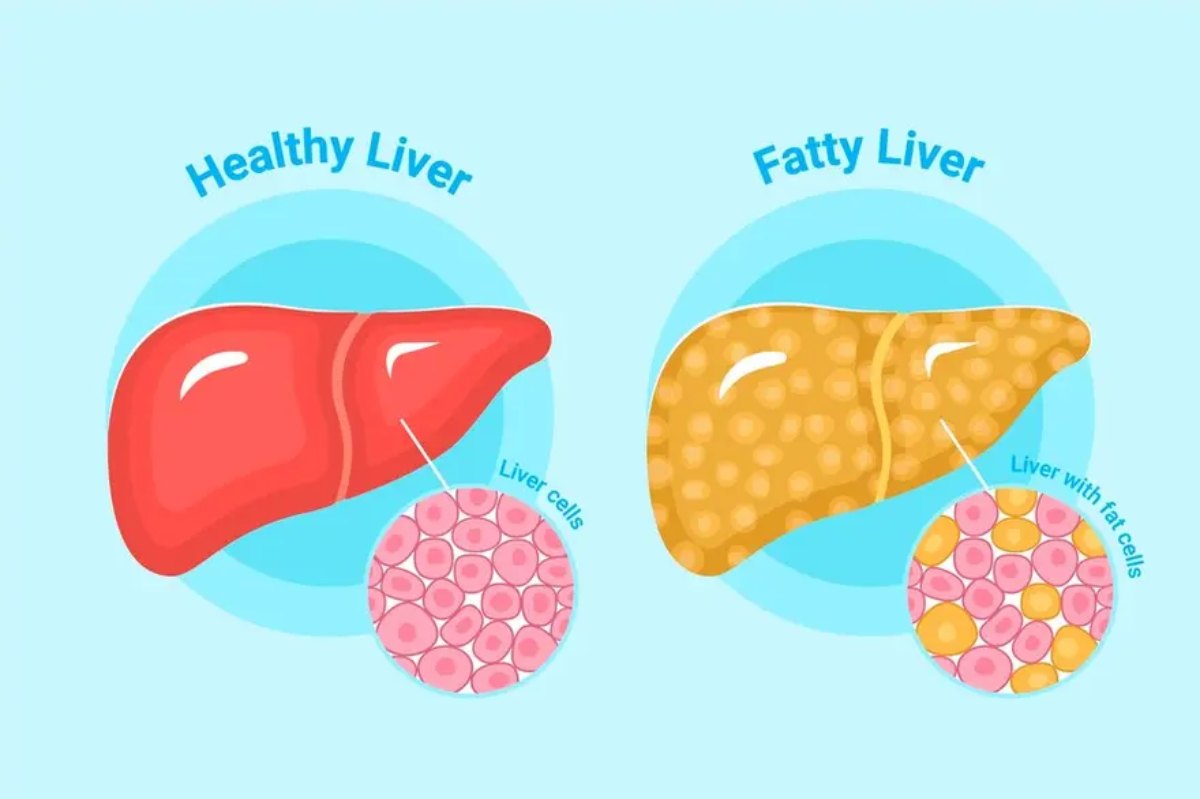Fatty liver disease is increasingly common, often discovered incidentally during routine ultrasounds or health checkups. Among its stages, fatty liver grade 1 is considered the earliest and mildest form. Although often symptomless, early diagnosis is crucial to prevent progression.
Table of Contents
What Is Fatty Liver Grade 1?
Grade 1 fatty liver, also known as mild hepatic steatosis, indicates a small accumulation of fat in liver cells. At this stage, fat content typically makes up about 5–10% of the liver’s weight.
This condition may not cause any noticeable symptoms initially, but it reflects the beginning of a liver’s struggle to process fats efficiently. If left unaddressed, it can progress to grade 2 or 3, and eventually to non-alcoholic steatohepatitis (NASH), cirrhosis, or liver failure.
Is Grade 1 Fatty Liver Dangerous?
One of the most common concerns is: “Is grade 1 fatty liver dangerous?”
The answer is not immediately, but potentially. Grade 1 fatty liver isn’t dangerous on its own, but it is a warning sign. If lifestyle and dietary habits are not improved, it may lead to inflammation, liver cell damage, and more severe liver diseases over time.
Early diagnosis offers a critical window for reversing fatty liver disease through non-pharmacological methods like diet and exercise.
Causes of Fatty Liver Grade 1
Several factors contribute to the development of fatty liver grade 1, including:
-
Obesity or overweight
-
Insulin resistance or type 2 diabetes
-
High cholesterol or triglycerides
-
Poor dietary habits (high sugar, high fat)
-
Sedentary lifestyle
-
Excess alcohol intake (though NAFLD is non-alcoholic)
-
Medications such as corticosteroids or certain chemotherapy drugs
Symptoms of Grade 1 Fatty Liver
Most people with grade 1 fatty liver do not experience symptoms. However, some may notice:
-
Mild fatigue
-
Abdominal discomfort
-
A feeling of fullness in the upper right side of the abdomen
-
Slight elevation in liver enzymes on blood tests
If symptoms are present or liver function tests are abnormal, further evaluation is recommended.
Hepatomegaly with Fatty Liver Grade 1
Hepatomegaly refers to an enlarged liver, which may occur alongside fatty liver grade 1. This enlargement happens as fat accumulates and liver cells begin to swell. Although mild hepatomegaly is not always harmful, it is an indicator of ongoing liver stress.
Routine imaging like ultrasound can detect both fatty liver and hepatomegaly, guiding early intervention.
Diagnosis of Fatty Liver Grade 1
Diagnosis usually involves:
-
Ultrasound Imaging – Primary tool for detecting liver fat
-
Liver Function Tests (LFTs) – May show elevated enzymes
-
FibroScan or MRI – For further assessment if needed
-
Blood Sugar & Lipid Profile – To evaluate metabolic health
Best Medicine for Fatty Liver Grade 1
There is no specific FDA-approved medication for fatty liver grade 1. However, several medicines and supplements may help support liver health:
Common options include:
-
Vitamin E – Antioxidant that may reduce liver inflammation
-
Pioglitazone – Used in diabetic patients to improve liver histology
-
Metformin – Can help with insulin resistance
-
Silymarin (Milk Thistle) – Herbal remedy used for liver protection
Before starting any best medicine for fatty liver grade 1, consult a healthcare provider. Lifestyle changes remain the cornerstone of management.
Natural Remedies and Lifestyle Changes
Reversing grade 1 fatty liver is very achievable with proper lifestyle modifications. Key strategies include:
-
Weight Loss – Aim for 5–10% body weight reduction
-
Exercise – 30–60 minutes of physical activity daily
-
Low-carb Diet – Avoid sugars, refined carbs, and processed foods
-
Healthy Fats – Use olive oil, avocado, nuts
-
Avoid Alcohol – Even small amounts can worsen liver fat
-
Stay Hydrated – Water supports liver detoxification
Diet Tips for Managing Fatty Liver Grade 1
-
Eat plenty of vegetables and fruits
-
Choose whole grains over white rice or bread
-
Include omega-3 fatty acids (found in fish like salmon)
-
Avoid sugary drinks, sodas, and energy drinks
-
Limit red meat and fried foods
Prognosis and Prevention
With early detection and proper management, fatty liver grade 1 can be completely reversed. However, ignoring it can lead to irreversible liver damage.
Prevention Tips:
-
Regular health checkups
-
Maintain a healthy BMI
-
Control diabetes and cholesterol
-
Avoid unnecessary medications
-
Adopt a liver-friendly lifestyle
Final Thoughts
Fatty liver grade 1 may seem like a mild issue, but it’s a significant early marker of potential liver disease. Taking proactive steps—through diet, exercise, and medical advice—can help reverse the condition and restore liver health.
If you’ve been diagnosed with hepatomegaly with fatty liver grade 1, consult a healthcare professional for personalized treatment. Addressing it early makes all the difference.

